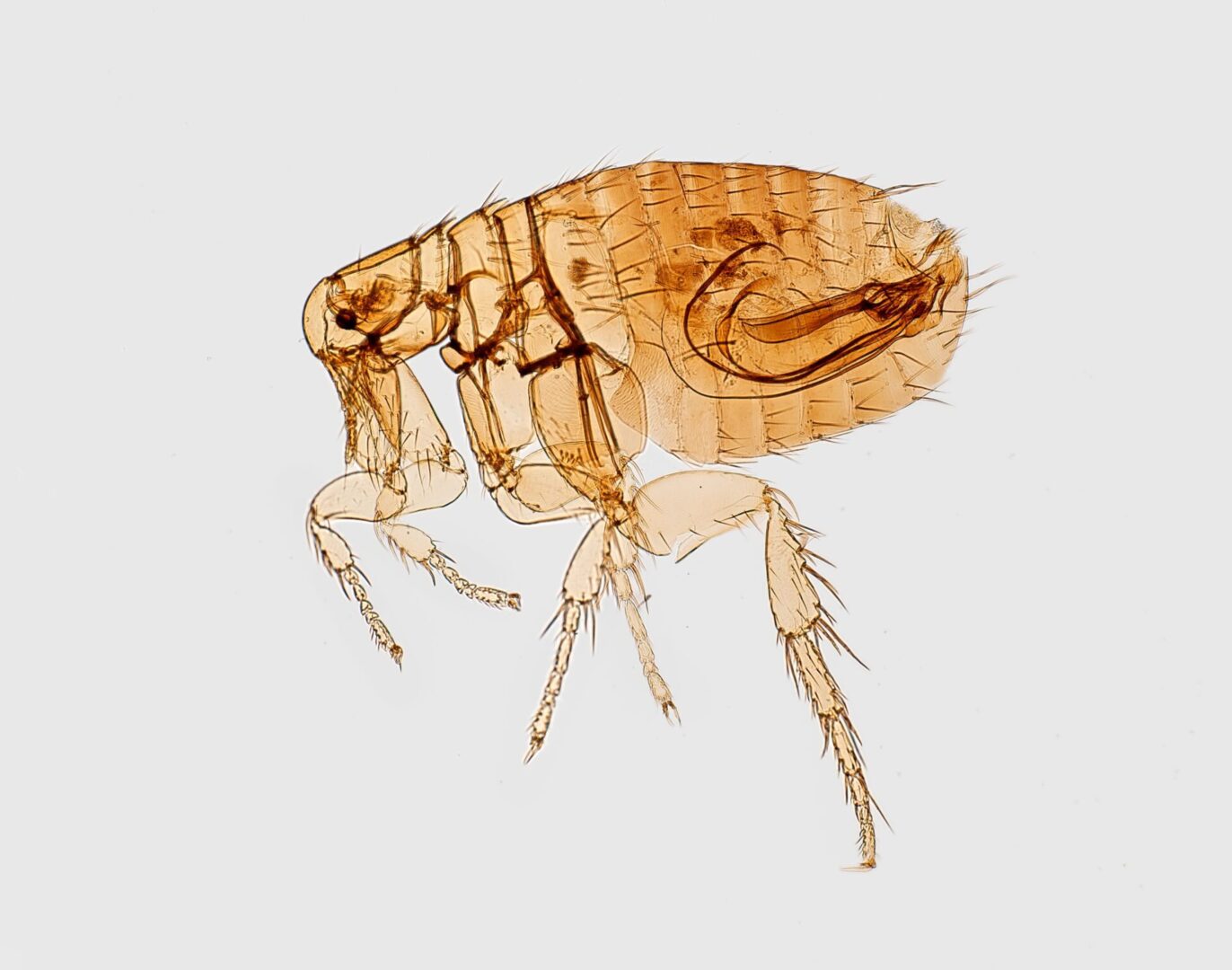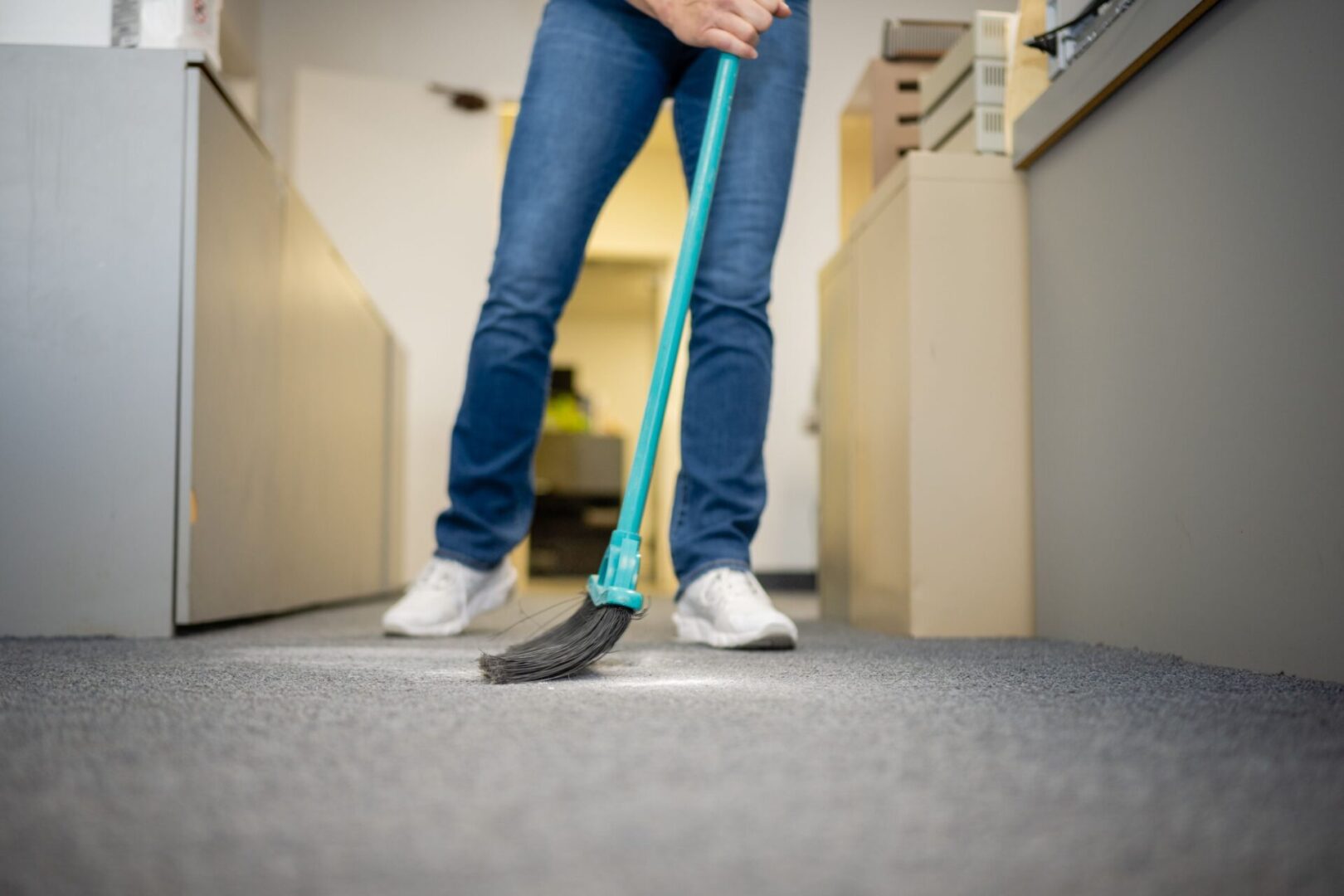Flea Identification
Fleas are external parasites that live by feeding on blood from mammals and birds. Adult fleas are very small insects (about 1/16” to 1/8” long), dark reddish-brown and wingless.
They are compressed from side to side allowing easy movement through the fur, hair or feathers of their host. They have three pairs of legs, and their longer back legs make them excellent jumpers. Fleas can jump thirteen inches horizontally and seven inches vertically. The flea’s body is hard and covered with hairs and spines projecting backward, and they have a piercing-sucking mouthpart used to obtain blood meals from a host.


Types of Fleas
The most frequently found flea in the world is the cat flea (Ctenocephalides felis). Its primary host is the domestic cat, and it is also the most common flea found on domestic dogs. There is also a dog flea (Ctenocephalides canine) which looks like a cat flea but is not as common. Sticktight fleas (Echidnopaga gallinacea) can become problematic when pets frequent areas near poultry.
These fleas attach themselves to the host's eyes and ears. Other popular fleas are the human flea (Pulex irritans), the northern rat flea (Nosopsyllus fasciatus) and the oriental rat flea (Xenspsylla cheopis).
Life Cycle and Habits of Fleas
A flea's life cycle consists of egg, larva, pupa and adult, and the entire cycle can vary from two weeks to eight months depending on species, humidity, temperature and food. (The life cycle of a cat flea up to adulthood at room temperature takes about eighteen days.) Normally, after the female has a blood meal, she will lay between fifteen to twenty oval, white eggs per day on the host. Once the eggs dry they will usually drop off the host where it rests (carpet, upholstered furniture, cat or dog boxes, etc.). Eggs hatch into white, worm-like larvae in two days to two weeks.
The flea larvae phase consists of three stages, which last a week to several months. The larvae mostly feed on the dried blood found in the fecal matter of the adult fleas which falls off the host. Larval development normally occurs in places where there is at least 75% humidity, and larvae develop more quickly in warmer temperatures (70F to 90F).
Once the larval stage is completed, the larva spins a tiny, silken cocoon and pupates. The pupae is usually camouflage by local debris. The larva will mature to adulthood inside its cocoon in about five to fourteen days. Since the new flea can only live a week without a blood meal, it will remain in its cocoon until it detects a host through vibration (people or pets walking), pressure (a host laying down on them), noise, heat or carbon dioxide. This is one reason why a family returning to an unoccupied home after an extended period of time (a long vacation) may suddenly be attacked by a massive amount of fleas. Newly emerged fleas will jump on a host only minutes after leaving their cocoon and begin feeding. An adult cat flea will normally live for thirty to forty days.

Flea Treatments and Prevention

Indoor Flea Treatment
Until recently, the only treatments available to treat fleas contained dangerous insecticides. Even though these products are still available, they can be unsafe for some pets and small children.
It is also imperative to treat your home, otherwise pets will quickly become infested again. Wash your pet’s bedding in hot water, and let it soak in soapy water for at least fifteen minutes. Thoroughly vacuum carpets, rugs and flooring, and dispose of the vacuum bag in an outside trash receptacle. When vacuuming, pay special attention to base boards, under furniture and anywhere else fur and lint accumulate. After vacuuming, treat your carpets and upholstery with environmentally safe Fleabusters® Rx for Fleas Plus ® which, when used properly, will rid fleas for a year. You may resume vacuuming 48 hours after application.

Outdoor Flea Treatments
If your pet spends time outside, then you should treat your yard as well. Outdoor flea populations are the most common in hot, humid areas or places along the coast.
Fleas tend to be prevalent in shaded areas where animals rest. Instead of a chemical insecticide, use Fleabusters® Nematodes. It’s a natural and safe way to rid your yard of fleas.

Flea Prevention
Prevention is the best way to manage fleas. Bathe your pet regularly with Fleabusters® Flea Shampoo (especially if your pet frequents infested animals or areas), and thoroughly clean your pet’s resting areas indoors and outdoors on a weekly basis. Keep your lawn trimmed and your yard fenced to keep out any infested animals.
Learn More About Fleas
To find out more about effective flea treatments and get tips on identifying the kind of flea that your home or pet has, you may get in touch with our team at Fleabusters.